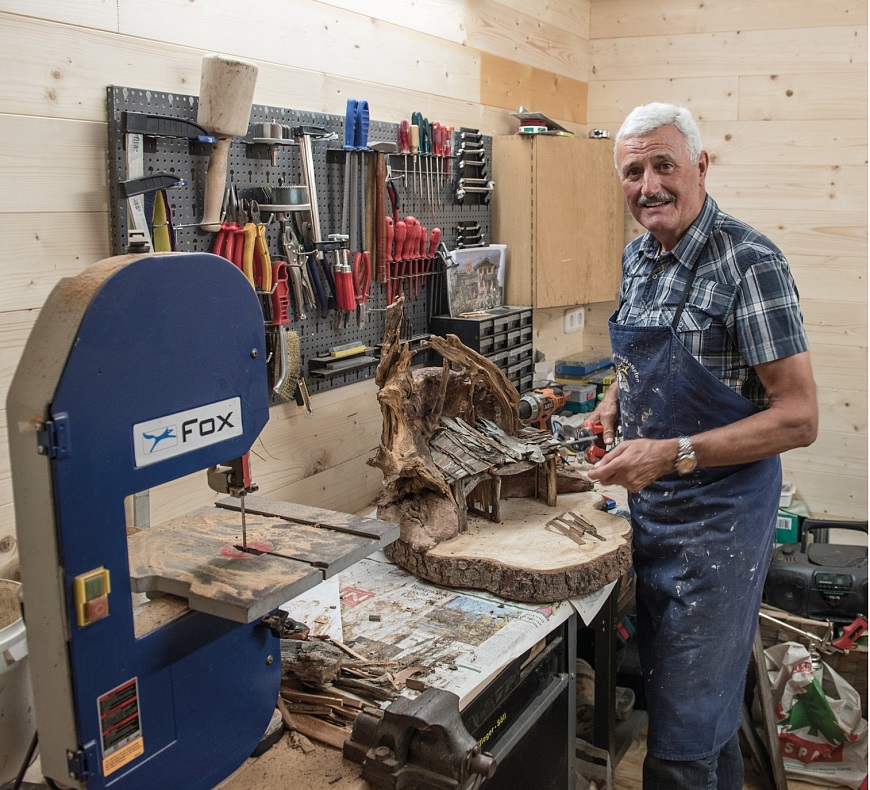Kaisertal Insider

People & tales
Kaisertal Insider
It’s best if we start with a story, which is probably familiar to almost everyone. If only due to the well-known Christmas song “Ihr Kinderlein kommet” (Come all ye children).
Mary, heavily pregnant, with Joseph at her side, in search of lodgings. Because the two are very poor, and no innkeeper is willing to let them stay, they find shelter in a stable that Mary and Joseph find next to an inn. On this night He is born: Jesus Christ. On hay. Between an ox and a donkey.
The evangelist Luke is the first to report the birth of Jesus:
“While they were there, the time came for the baby to be born, and she gave birth to her firstborn, a son. She wrapped him in cloths and placed him in a manger, because there was no guest room available for them.”
Luke 2:4-7
There are countless descriptions of the story, but they all agree on one point:
It’s thanks to Francis of Assisi that the tradition survived. From 1223 he encouraged people to re-enact the biblical manger scene (even at the time with ox and donkey, which we think is pretty cute).
The core message of the living manger: God was born as a “normal” human being in the poorest of conditions.
The manger should remind us that solidarity and charity are part of being Christian. In the 17th century, influenza found its way to the parlours of the population.
Krippler. That’s the name for people who build mangers (Krippe in German).
In 1860 the first manger association was founded in Pitztal, and in Tyrol today there are 80 (!) local associations with almost 6,500 members. An impressively large number! The beautiful Kufsteinerland holiday village of Langkampfen has a special passion for manger building, with 14 years of manger building and 184 members in the Manger Association! We got these details from Josef Luchner, the chairman of the Manger Association, but more about him soon.
The manger builders in Langkampfen meet twice a week, and use a variety of materials to work on their masterpieces. Wood types such as particle board and old wood, cork, roots, bark and stones are popular materials, and can often be found on mangers. Experienced volunteers are present to help the manger builders complete their work.
It takes 3 months from the base plate to a completed work. This also explains why the tradition is so special: There will NEVER be mass production of hand-made mangers.

But before they can start with the “construction”, a manger builder needs to decide which style of manger they want to build.
There is the Oriental version, which sets the scene of Jesus’ birth and recreates the character of Israel with grottos, caves and towers. Or there is also the local version, where the manger is often represented as a farmhouse, with Jesus born in the adjoining stable. In the Tyrolean tradition the “stable” is a freestanding or adjoining shed. In the background there is - what else would you expect - the magnificent scenery of the Alps.
Mr Luchner, please tell us a little bit about your role as Chairman of the Manger Association.
“The Manger Association was founded on November 2nd, 2002 – and we now have 184 members. As the chairman, my goal is that every family in Langkampfen has a manger! Of course it’s also my task to awaken interest in manger building beyond the village boundaries.”
Are there rules for setting up a manger?
“No, there are no requirements. For example, some people set up their manger at the start of Advent, others only a little before Christmas. Some people put it away on Epiphany (6 January), while others leave it out until Candlemas (2 February). The arrangement of figures is in principle up to the individual. However there are a few points that should be observed:
Baby Jesus should not be placed in the manger before Christmas Eve. Mary kneels on the right side of the child, Joseph stands on his left. The ox and donkey are traditionally placed behind the family, and the 3 wise men only appear on Epiphany (6 January).”
The charm of manger building – what makes it special?
“For an enthusiastic manger builder like me it’s the best hobby in the world! The handicraft, and the wide range of materials that can be used such as old wood, particle board, stone, cork or bark, mean that it is always a great and exciting challenge. The finishing touches, before a manger is done, are the plants. A spot of moss here, a branch there, and little trees that are integrated into the landscape. That’s what makes the manger really come to life. Small, intricate details, such as a campfire, lights or a well, are what really make the difference. Your enthusiasm for manger building grows with each manger. Everyday stress and worries are suddenly forgotten while you’re building.
Do your own mangers have a special significance to you?
“I started building mangers in the 1970s, and have by now built 25 small and large ones, which can mainly be found in the houses of my family and friends. The Oriental manger for the family of my daughter is special to me, because I managed to transform her vision down to the last detail. You never finish learning when it comes to manger building!”
His enthusiasm makes you want to build your own manger!
0 Comment (s)
More comments